Given the competition in today’s app market, knowing who uses your app and why is no longer a nice-to-have.
Being an app developer or a marketer, it can be the silver lining between whether your apps get discovered or remain untraceable under layers of other noisier content.
While App Store Optimization (ASO) does a lot to ensure that your app is discoverable by the right users, if you are not targeting enough of the people who want and need it, even the savviest ASO strategies might come up short.
This article will cover how user demographicsStatistical data relating to the population and particular groups within it. can boost your ASO campaigns by making certain that the only thing other than getting exposure is reaching the people who have a higher probability of actually connecting with it.
We will learn why user demographics are important to your business, how to segment and classify them by significant attribute values such as gender or location, while highlighting specific tools that you can use effectively for this analysis.
By the end of this article, you will have a good idea of how user demographics can empower your application and uplift it amongst its competitors in app stores.
- Knowing Your Target Audience with ASO
- Tailoring the App Store Listings to User Demographics
- Using User Demographics in ASO Keyword Strategies
- Increase Consumer Engagement through Demographic Information
- Trend 4: The Rise of Demographics and ASO
- Closing Thoughts: How to Utilize Your User Demographics in ASO
- User Demographics in ASO: Frequently Asked Questions
Knowing Your Target Audience with ASO
User demographics are the statistical data that illustrate who makes up your audience: age, gender, location, income level, and education.
When it comes to ASO, this data is incredibly valuable and tells you a lot about who your potential users are and what they want from an app like yours.
Understanding such demographics will allow you to tailor ASO strategies that are aimed specifically at the people to whom your app appeals and who are most likely to download it.
But why is this so important?
Imagine launching a fitness app that would normally resonate with young people but marketing it in locations dominated by users over 60.
The chances that your app will succeed in that market are significantly reduced.
However, if you focus on areas where your target audience is present, the chances are that you will get discovered by the right users.

Illustration of the significance of user demographics in App Store Optimization strategies.
ASO and User Demographics: Why It Is Important
By truly understanding your user base, you can make strategic decisions regarding every detail related to app marketing.
- Personalize content: Develop versions of your app description, screenshots, and promotions to better appeal to different types of users.
- Optimize keywords: Choose the most relevant keywords that will help your app get found in searches by your target demographics.
- Localize properly: Tailor your content and marketing to cater to the cultural sensibilities and language nuances of different demographic verticals.
- Improve user engagement: Users are more likely to use an app that feels tailored to their needs, leading to higher retention rates over time.
This way, you deploy a more targeted approach rather than relying on luck.
Bringing your app to the people who are most likely interested in it allows you to succeed amidst all the other apps out there.

Depiction of strategic segmentation of user demographics for targeted app marketing.
Defining Strategic Demographic Segments
User demographics alone cannot optimize your app for ASO, so the first thing you need to do is identify which segments of your audience are most important.
This includes analyzing data from different sources, including app analytics, social media insights, and market research reports.
Identify patterns based on age, gender, location, and interests that lead to more in-app engagement and conversions.
When you do this, you can identify which demographics would most benefit from your app.
For instance, if you are developing a mobile game app, it may gain traction among young users who are tech-savvy and enjoy competitive challenges.
On the other hand, a productivity app would likely appeal to working professionals aged 25-40 who need help with their work efficiencies.
Once you have figured out your segments, start optimizing ASO toward those specific demographics.
Understanding user demographics is key to effective ASO strategies, helping you tailor your app to reach the right audience.
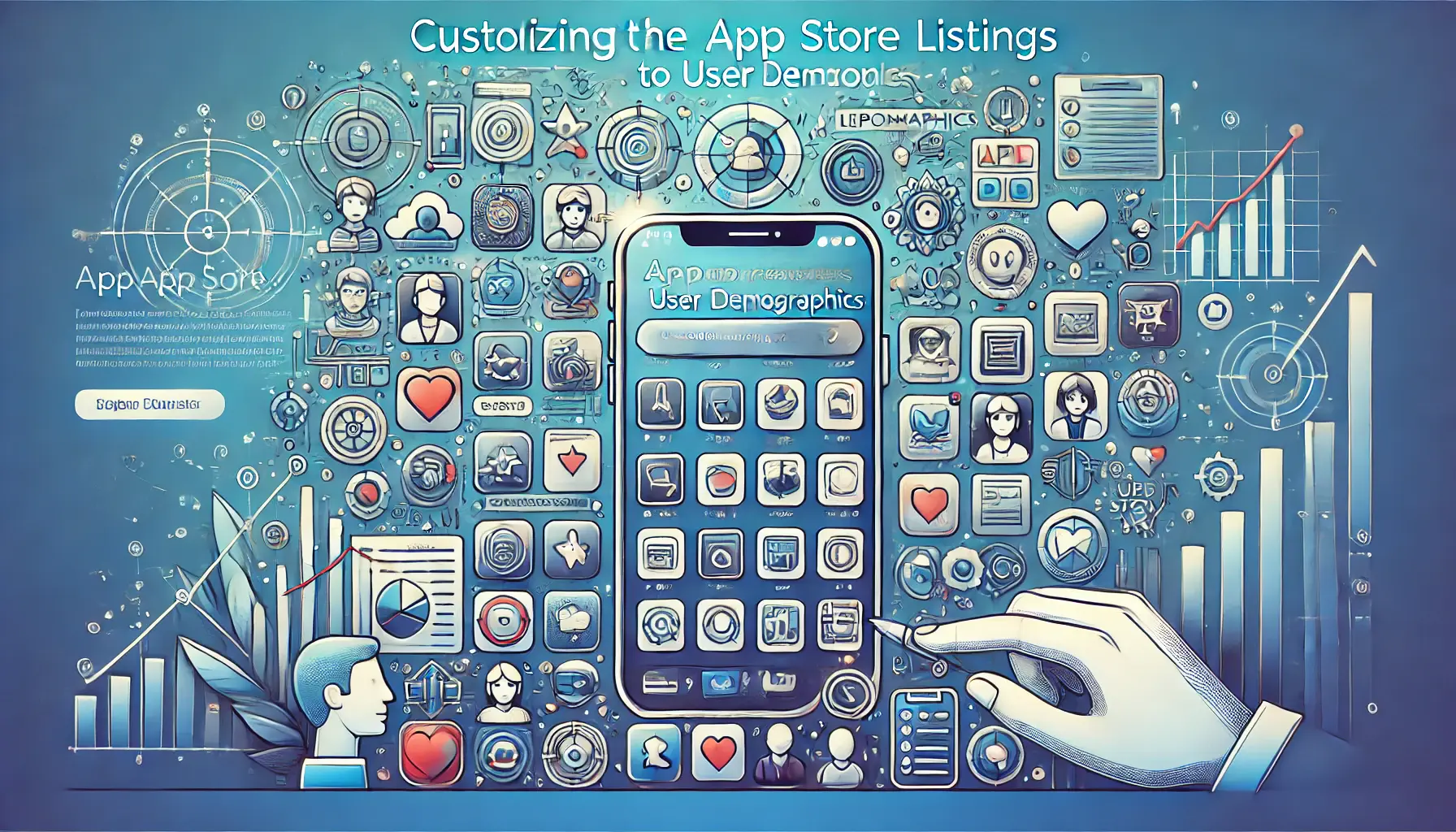
Illustration of customizing app store listings to match the preferences of different user demographics.
Tailoring the App Store Listings to User Demographics
Once you have identified your targeted demographic or audience segments, further optimize your app store listing to resonate strongly with these specific groups.
It is situations like this where the demographics of your users really come into play.
When you customize your app store product page to resonate with the tastes and habits of these users, you can drive more downloads and improve your app’s performance.
Here are a few strategies to help you optimize your app store detail pages for different user segments based on demographics.
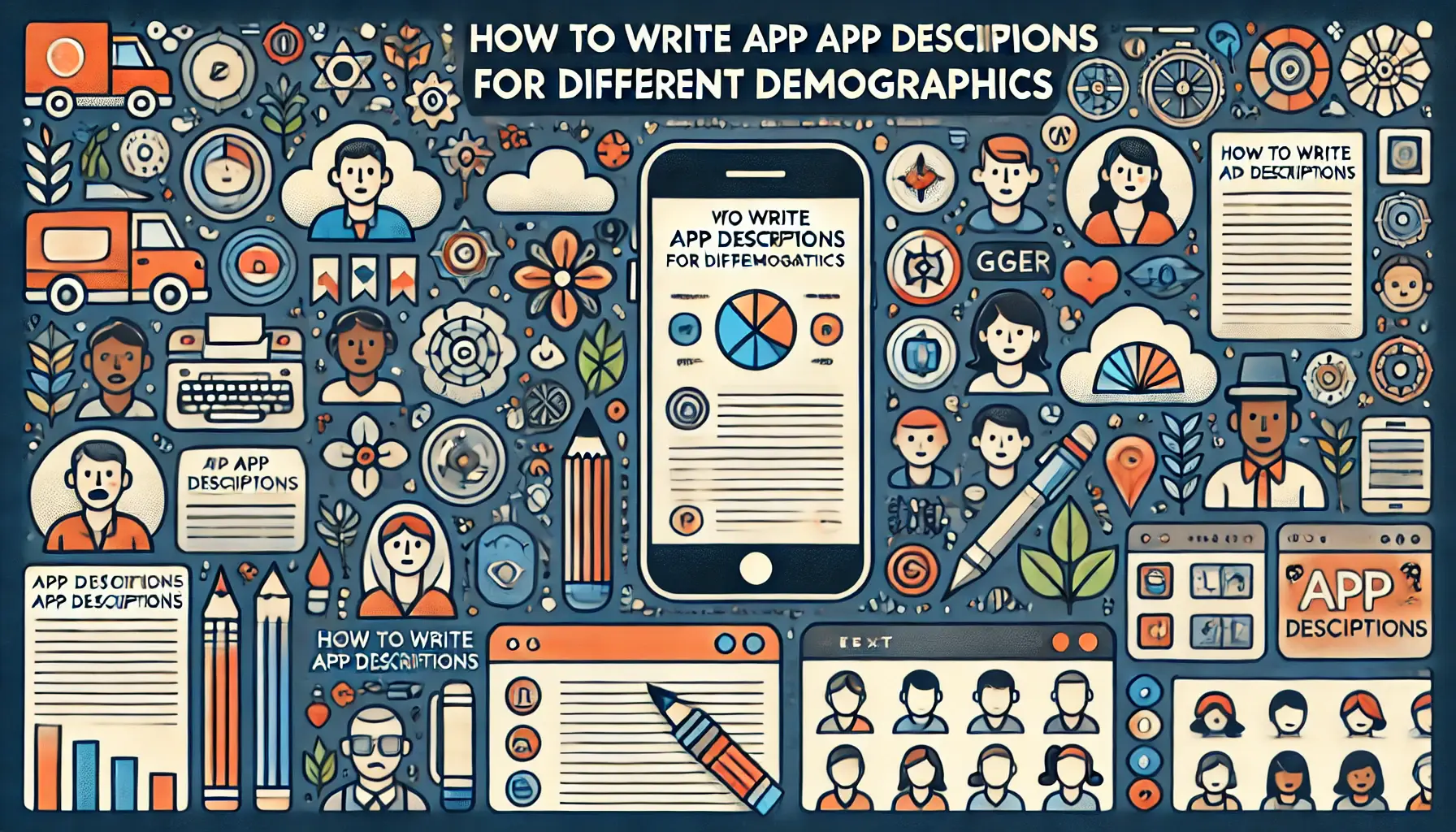
Visual representation of tailoring app descriptions to suit different demographic groups.
How to Write App Descriptions for Different Demographics
For many potential users, your app description is going to be the first impression they have of your app.
It has to communicate directly with your target audience, addressing their specific problems and pain points.
For example, if your target users are younger people, you should write a shorter app description with engaging language that is easy for them to understand.
If targeting older users, a longer and more practical description might be better.
You can also cross-reference keywords with qualities your user demographics may possess.
Naturally incorporating these keywords into your description is crucial—they are the lifeline of search within an app store and should also make sense to human readers.
The end goal is to make sure that those most likely to download your app can clearly see its value, which makes targeted exposure essential for capturing their interest.
Depiction of customizing app icons and screenshots to appeal to specific user demographics.
Creating Icons and Screenshots for Target Demographics
Icons and screenshots are visual elements that draw users to your app.
These need to be designed with your end users in mind.
This could mean a fun, colorful design to attract younger users, or perhaps something more toned down and professional-looking for the older, business-oriented crowd.
Additionally, you should always be able to demonstrate the features of your app in every screenshot.
Showcase the features most applicable to your demographics, and add labels to show how these features solve customers’ pain points.
When you do this, your app is not only more visually appealing, but it also helps users understand where and how they could utilize its features.
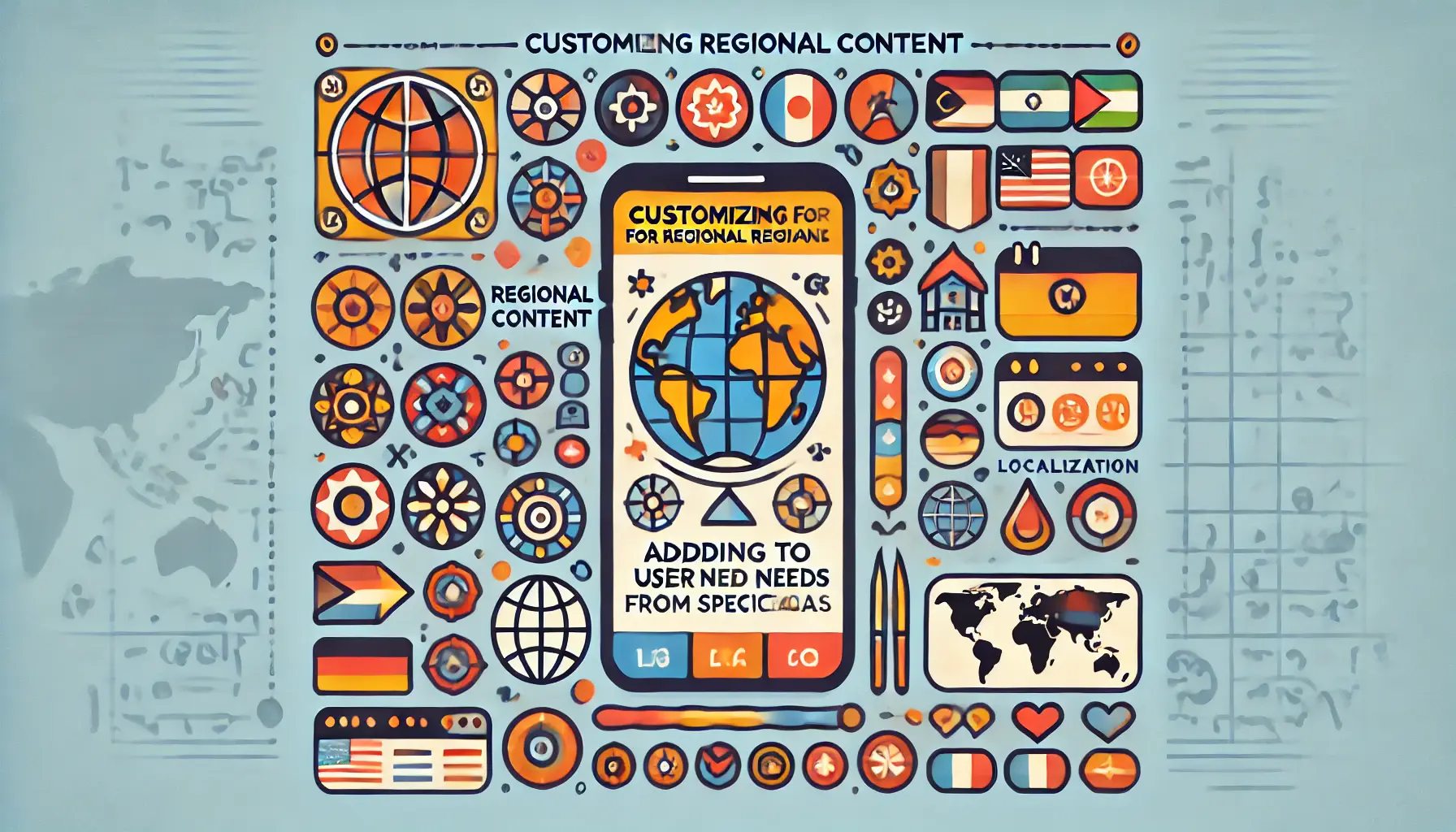
Depiction of customizing app content to align with regional and cultural preferences.
Customizing for Regional Content: Adhering to User Needs from Specific Regions
Localization is not only about translating your app content into different languages.
It includes modifying how you present your app and marketing to cater to the cultural sensitivities, customs, and expectations of prospective users in different regions.
Based on your target audience, you may want to change your app’s color schemes, imagery, or even the name of the product to better resonate with local preferences when targeting users in regions like Asia.
A comprehensive localization strategy might also involve changes in the app pricing model for different geographies and, in some cases, even adjustments to the app’s content to meet regional preferences.
With these tweaks, you can tailor your app to the specific likes and interests of users in different locations, which can significantly boost your app’s success in those markets.
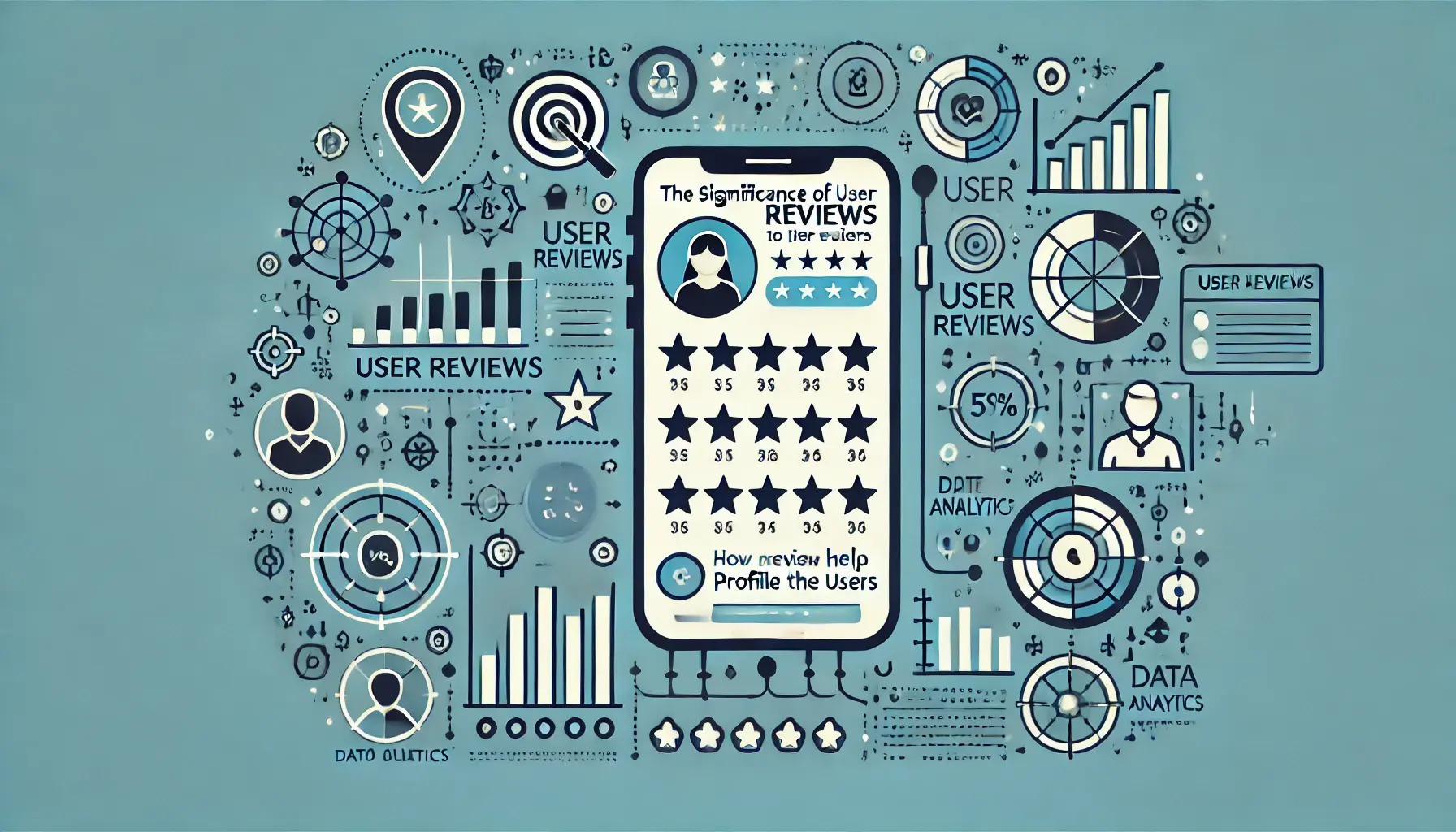
Depiction of how user reviews contribute to understanding and profiling app users.
The Significance of User Reviews to Profile the Users
User reviews are a goldmine of demographic information already at your fingertips.
There are valuable insights to be gleaned from the feedback users leave on your app.
This feedback can help you refine your ASO strategies even further, ensuring that your app continues to cater to the wants and preferences of your core audience segments.
Encourage users to review your product and take the time to reply to their comments.
This not only helps you grow your user base but also signals to potential new users that their feedback is heard and valued.
By actively engaging with your audience through reviews, you can maintain relevance and ensure that your app remains in line with the tastes of those who already use it.
Customizing your app store listing to align with the specific tastes and habits of your target demographics can significantly improve your app’s performance.
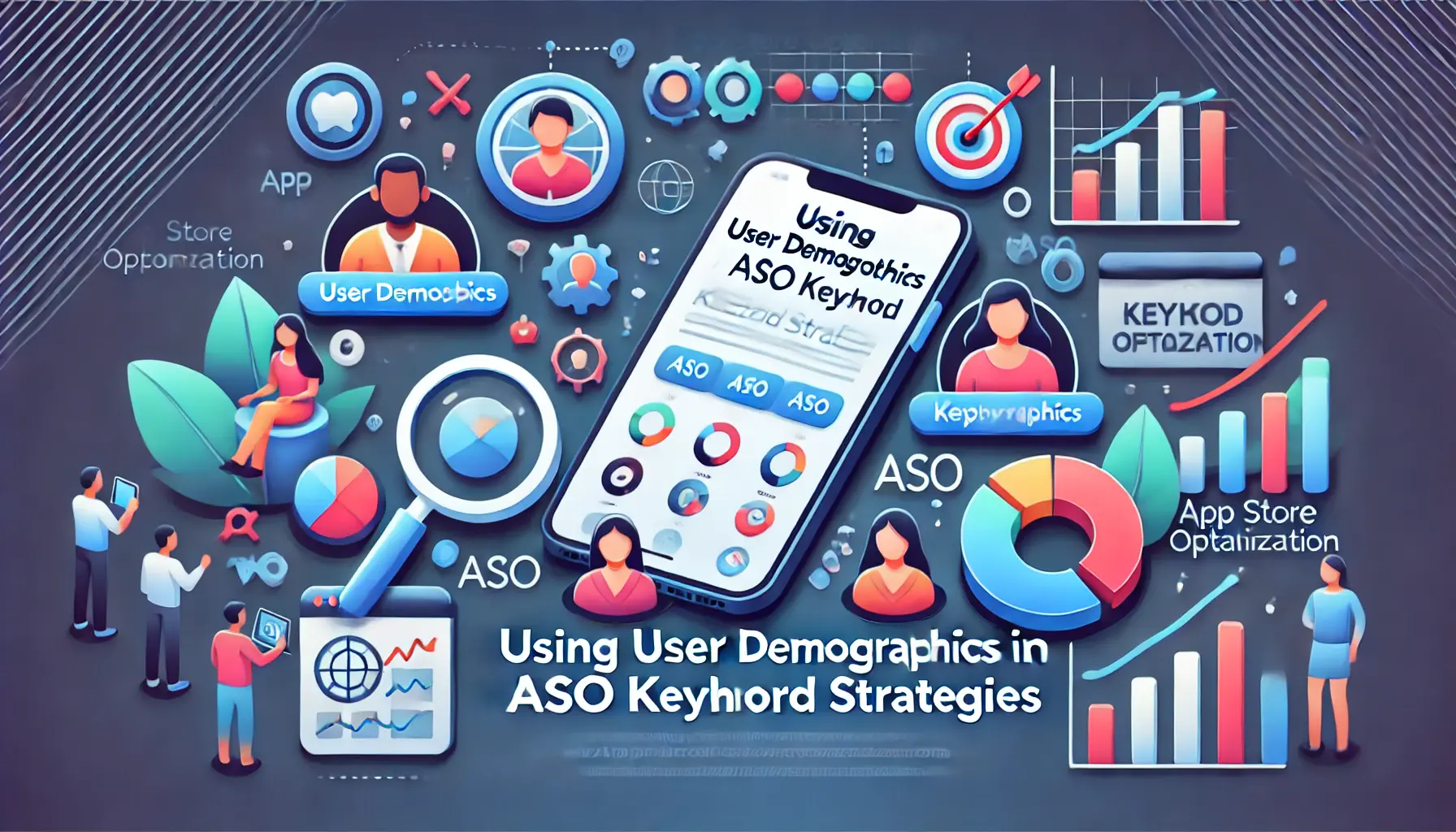
Depiction of how user demographics influence App Store Optimization keyword strategies.
Using User Demographics in ASO Keyword Strategies
Knowing your app users’ demographics will not only help you with the overall look and feel of your app but also shape how you decide on keywords for ASO.
Take a look at demographic data to see what resonates the most with your ideal customers, and use that information in selecting both general and long-tail keywordsSpecific, niche search terms that typically have lower search volume but higher conversion rates. for increased visibility and conversions.
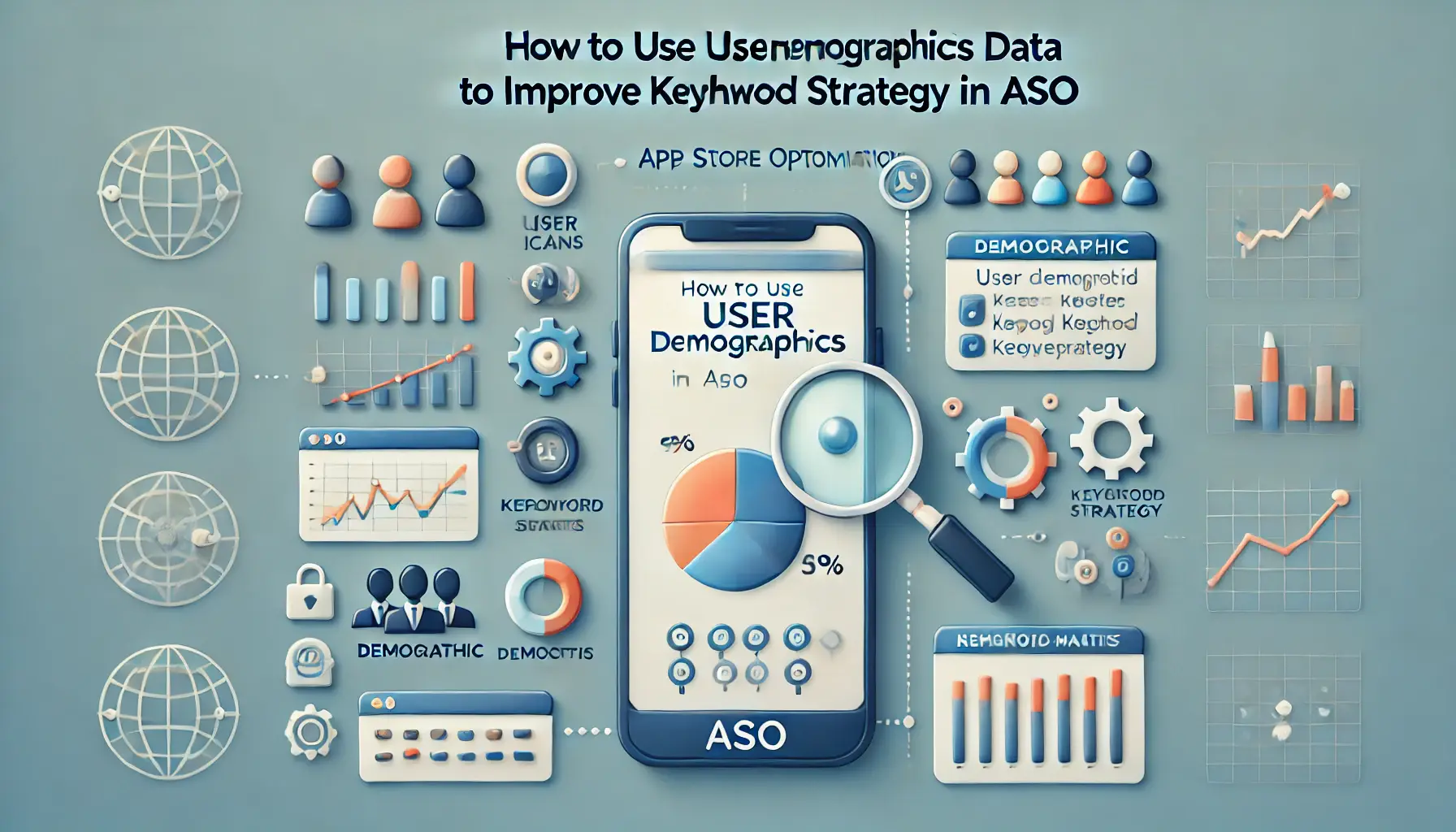
Depiction of using user demographics data to refine App Store Optimization keyword strategies.
How to Use User Demographics Data to Improve Keyword Strategy in ASO

Depiction of the influence of demographic factors on keyword selection in App Store Optimization.
The Impact of Demographics on Keyword Selection
When seeking apps, different groups of the population use their own language and behavior.
Younger users might search using various slang or abbreviations, while older users might opt for more traditional, descriptive words.
By understanding these nuances, you can choose keywords that are most likely to align with how your target audience searches.
This could involve running surveys or using tools like Google Keyword Planner to identify the keywords most common among a particular demographic group.
This data-driven approach helps build your keyword strategy based on what kind of users are searching most frequently.
- Keywords based on age: Younger consumers tend to look for apps using colloquialisms, while older audiences might use more classic keywords.
- Keyword targeting by location: The effectiveness of keywords can differ greatly based on geography, with users in some regions preferring certain terms over others.
- Interest-based keywords: Users’ hobbies, preferences, and lifestyles can guide the selection of niche keywords that cater to specific interests.

Depiction of how demographic information can be leveraged to enhance search rankings in App Store Optimization.
Leveraging Demographic Information to Increase Search Rankings
Incorporating keywords that are already proven in similar apps into targeted fields like the app title, subtitle, and description on the App Store will certainly help.
It also impacts your app’s ranking within the app store for your target audience, improving visibility among a more interested user base.
But it’s more than just stockpiling keywords; it’s about structuring these keywords in a way that is relevant and tailored to your audience.
Ensure that the keywords flow naturally in your content and are directly related to what your app does.
Regularly monitoring how your demographic performs and evolves over time can also guide updates to the keywords used within your application.
This approach will help you maintain or improve search engine rankings as demographic trends evolve, allowing you to adjust your ASO strategy for future growth.

Depiction of the effectiveness of long-tail keywords in reaching specific user segments in App Store Optimization.
Hyper-Targeting Long-Tail Keywords for User Segments
Long-tail keywords—more niche and specific than broader search terms—can be particularly effective for reaching demographic groups further down the purchasing funnel.
For example, if you have a fitness tracker app for senior citizens, using long-tail keywords such as “fitness app for seniors” could help you attract that demographic.
These specific topics generally have lower competition and higher conversion rates.
The more specific long-tail keywords you can identify that closely match the interests of your target audience, the better your app’s chances of being discovered by users who are already primed to convert.
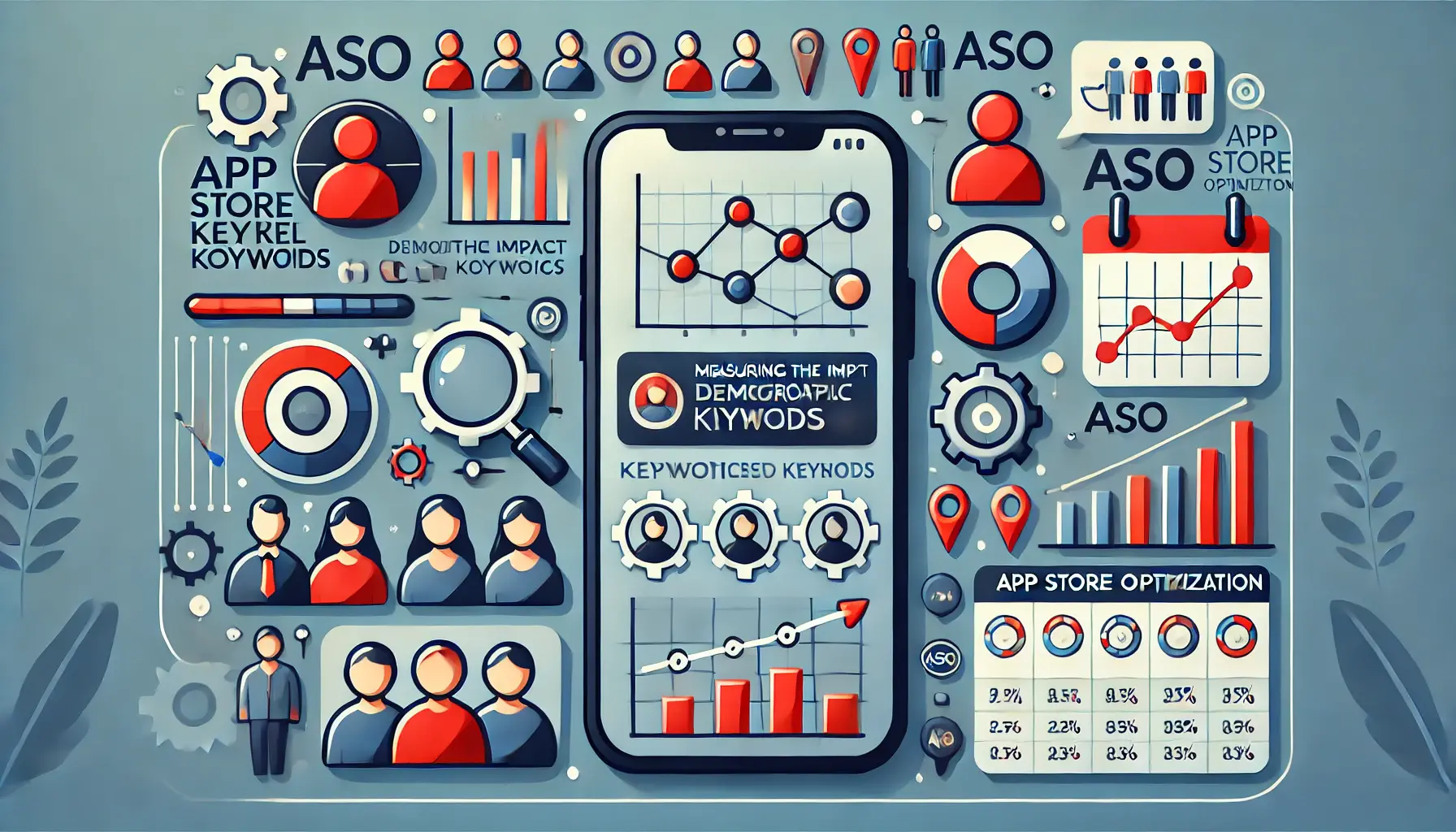
Depiction of evaluating the impact of demographic-based keyword strategies in App Store Optimization.
Measuring the Impact of Demographic-Based Keywords
To ensure your demographic-based keyword strategies are working, consistent testing is essential.
Track changes in visibility, downloads, and user engagement using analytics tools to monitor your keyword strategy.
Pay attention to the top-performing keywords that drive heavy traffic and conversions.
If certain keywords aren’t performing well, don’t hesitate to reevaluate and experiment with new ones—also consider refocusing on different demographics to gain valuable insights.
As demographic research enables you to adjust your ASO keyword strategy in real-time, you can maintain a strong presence in the app store and ensure that your app continues to attract new users from various targeted segments.
Leveraging user demographics in keyword strategies enhances your app’s visibility and relevance, driving more targeted traffic and conversions.

Depiction of how demographic information can enhance consumer engagement in app usage.
Increase Consumer Engagement through Demographic Information
Knowing user demographics is important not only for acquiring app visibility but also to enhance user engagement.
You can target notifications sent through your application accordingly, in a way that will suit the app user base demographically, which increases engagement and retention.
In this section, we will explore powerful ways in which demographic insights lead to deeper levels of user engagement and keep users returning for more.

Depiction of the tailored nature of push notifications and in-app messages to engage users more effectively.
Tailored Push Notifications and In-App Messages
Push notifications and in-app messages are excellent tools for maintaining user engagement, but they must be relevant and timely.
By personalizing them using demographic data, you can ensure they resonate with your target audience.
If your demographic data indicates that a large portion of your users are young professionals, you can send push notifications with productivity tips and features that help them manage their busy schedules.
Similarly, if your app is popular globally, your messaging can adapt to reflect users’ locales, languages, and cultural nuances.
By tailoring your messages, you can ensure they are more appropriate, increasing the chances that users will engage with your app.

Depiction of creating meaningful content that connects with and engages the target audience.
How to Develop Meaningful Content for Your Audience
Content is king when it comes to user engagement, but some content is created better than others.
To effectively keep users engaged, you must create insights that coincide with their interests, needs, and pain points.
Demographic insights allow you to develop content that caters to the tastes of different segments within your audience.
For example, if your app caters to health-conscious people, you can create content that revolves around workouts, healthy eating tips, and motivational success stories.
If your app is targeted at parents, you might offer parenting tips, educational activities for kids, or family-friendly recipes.
Creating content that is tailored to your audience’s demographics and lifestyles not only increases engagement but also strengthens your connection with them.
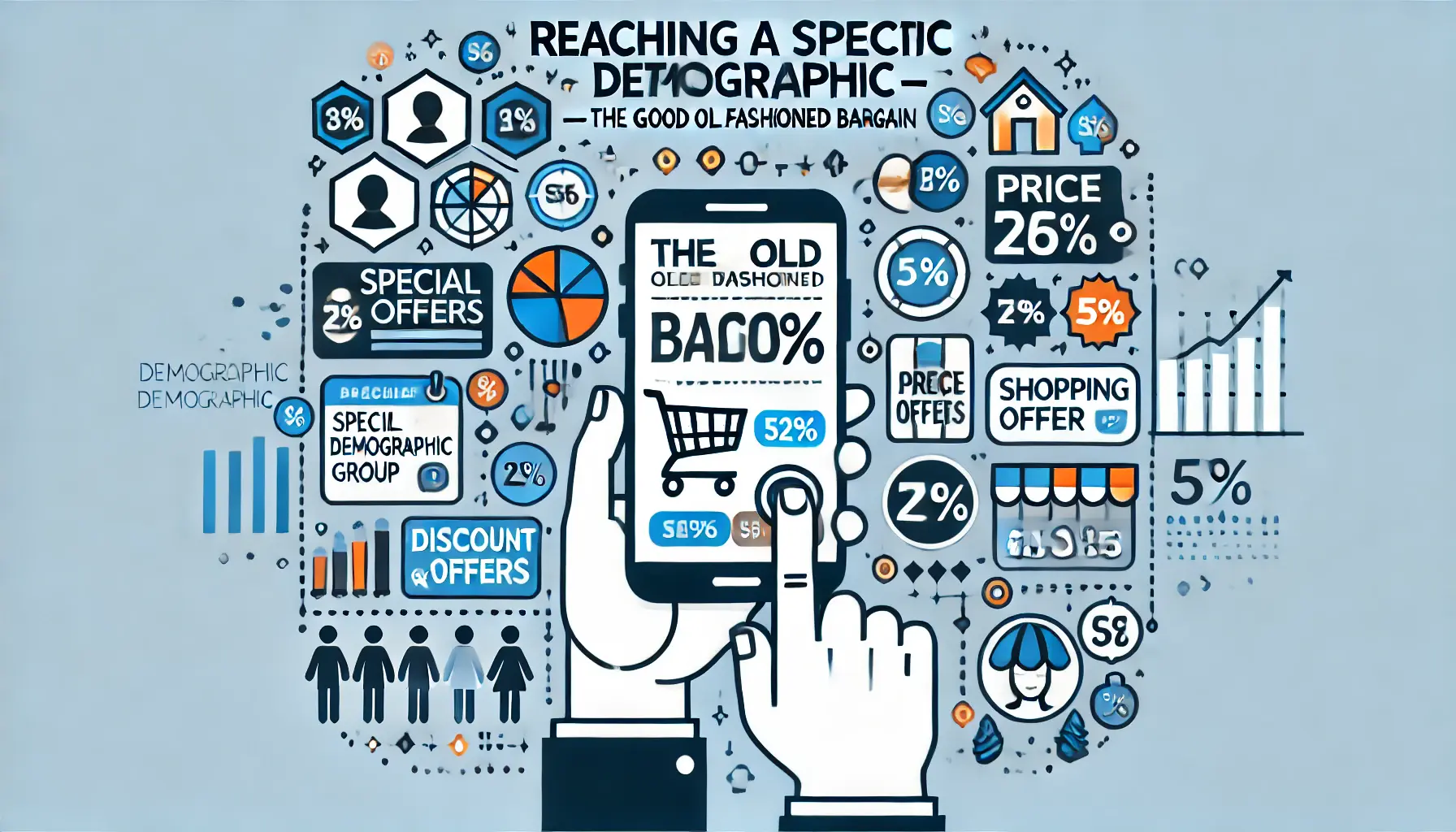
Depiction of targeting specific demographic groups with appealing bargains and discounts.
Reaching a Specific Demographic — The Good Old Fashioned Bargain
While promotions and special offers are strong drivers of user engagement, they need to be targeted to be effective.
Demographic data allows you to create promotions that are more likely to appeal to specific segments of your audience.
- Age-specific promotions: Offer discounts or special features to users within a certain age range, such as student discounts or senior citizen specials.
- Location-based promotions: Launch campaigns that target users in specific areas, providing discounts for products or services relevant to those locations.
- Interest-based promotions: Tailor promotions around the hobbies and interests of your users, such as exclusive fitness gear discounts for health-conscious users or special content for gamers.
Targeted promotions based on demographics not only increase engagement but can also lead to higher sales and continued usage of your app.
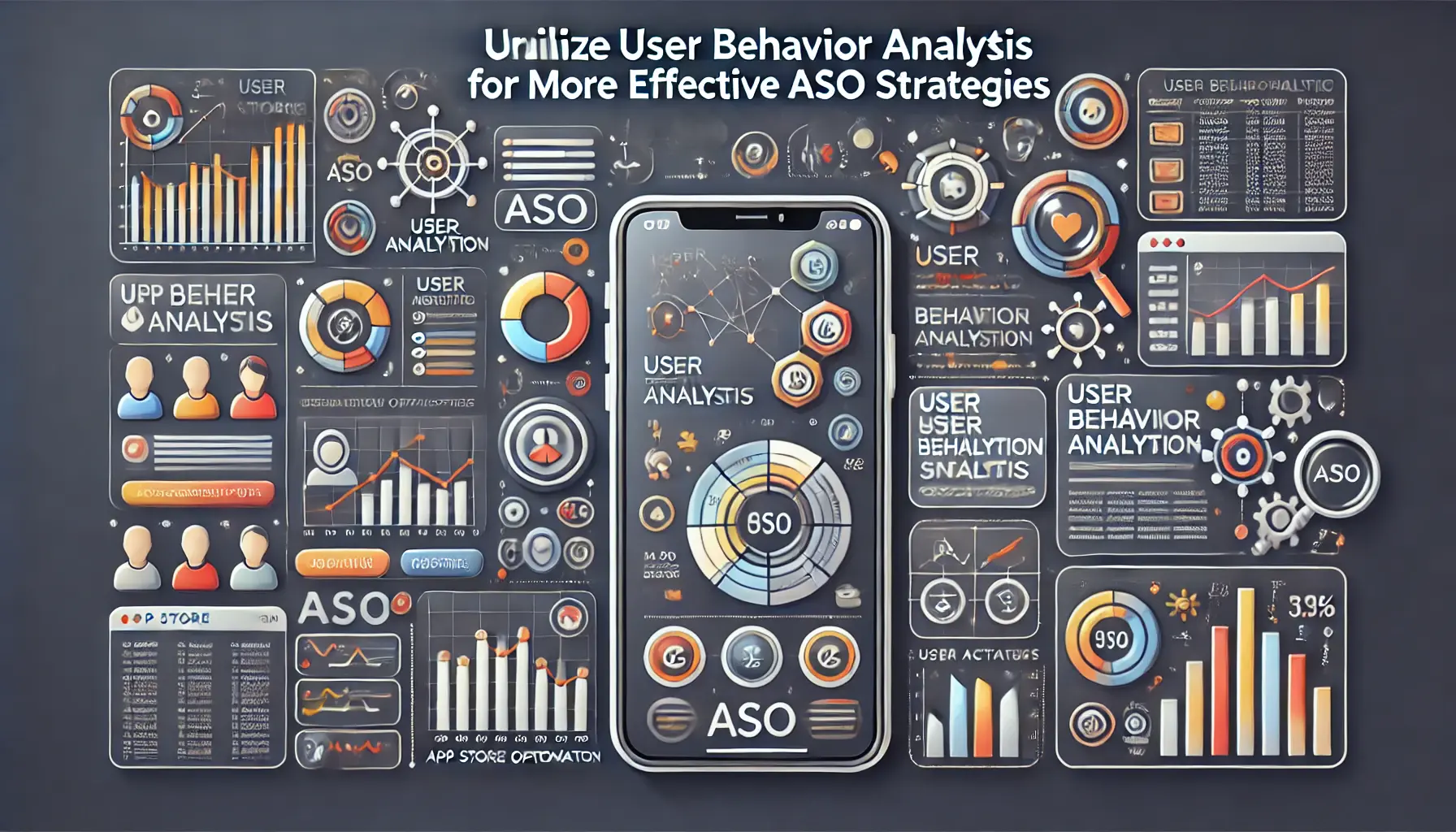
Depiction of how user behavior analysis can inform and improve App Store Optimization strategies.
Utilize User Behavior Analysis for More Effective ASO Strategies
Demographic insights are a goldmine not just for initial ASO strategies but also for ongoing optimization.
Analyzing user behavior data can reveal intrinsic differences in how various demographics use your app.
This type of analysis can show you which features are most popular among certain demographics, allowing you to optimize or promote them more prominently.
It can also highlight areas where your app might be missing the mark, giving you an opportunity to make improvements that better meet your audience’s needs.
By continuously refining your ASO efforts with demographic insights and understanding how users interact with your app, you can ensure that your app remains relevant and engaging for your target audience, ultimately driving higher retention rates and success.
Using demographic insights to tailor push notifications and in-app messages can boost user engagement and retention.
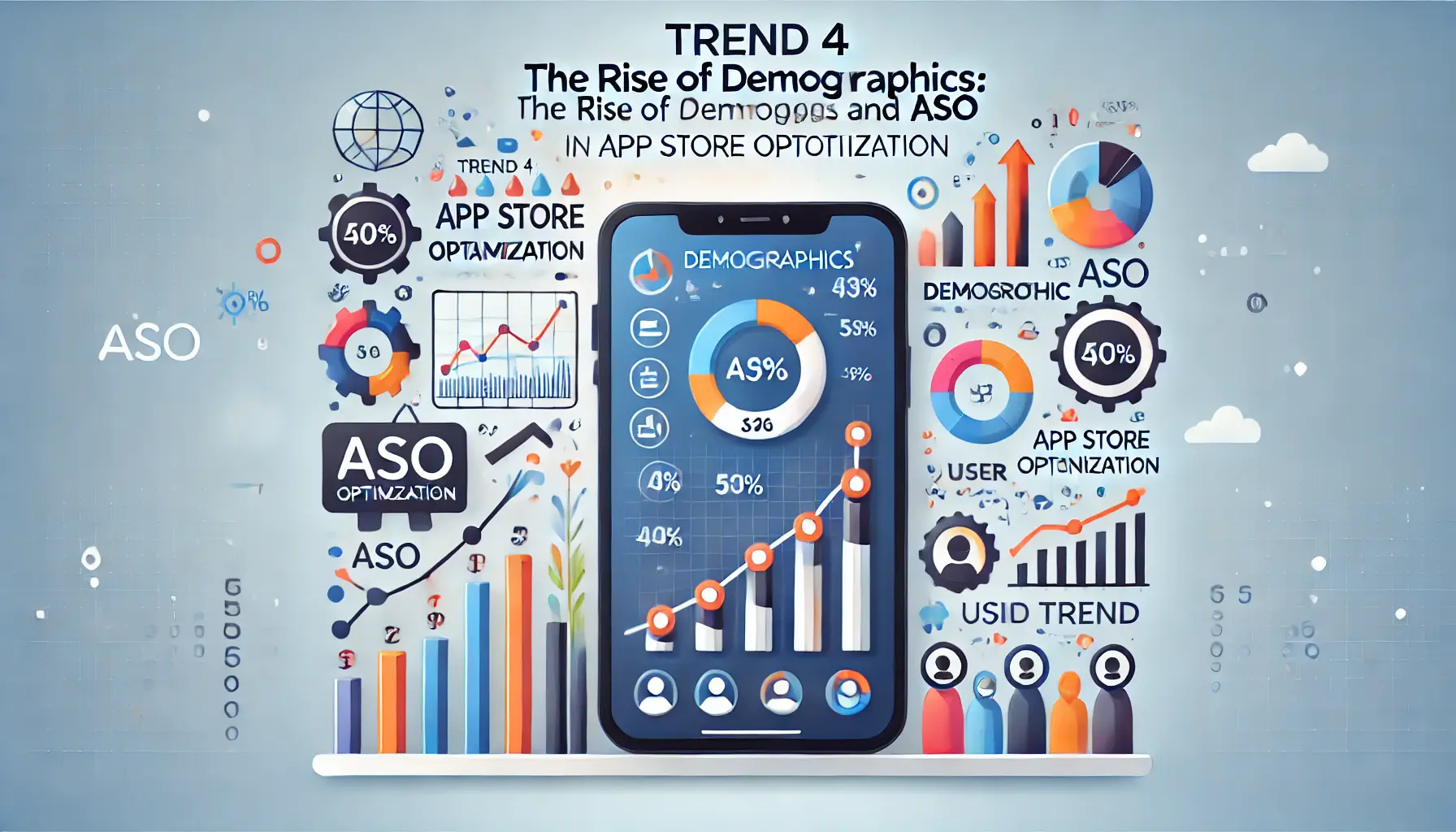
Depiction of the increasing relevance of demographics in shaping App Store Optimization strategies.
Trend 4: The Rise of Demographics and ASO
The importance of demographics in App Store Optimization (ASO) has evolved over time as the digital landscape has transformed.
For iOS app developers and marketers who understand these shifts, staying ahead of their competitors in future trends is much more likely.
The demographic shift in the global population is a key factor influencing the future of ASO, and recognizing this should help you prepare your strategies effectively.
In this section, we will review some emerging trends that underscore how increasingly important demographics are becoming in ASO and what you can do to leverage these trends.

Depiction of how AI and Machine Learning are applied in targeting user demographics for App Store Optimization.
Applications of AI and Machine Learning in Demographic Targeting
AI and Machine Learning are revolutionizing demographic targeting in ASO.
These technologies can analyze billions of data points to identify patterns and trends, something a human could not achieve at the same scale.
Moreover, AI and ML allow you to gain a deeper understanding of your user demographics, improving the personalization and effectiveness of your ASO strategies.
For example, AI can predict which demographic segments are more likely to engage with your app, enabling you to focus your targeting efforts on those users.
ML algorithms also allow your ASO strategies to continuously evolve based on real-time data, ensuring that your app remains relevant to its target audience.
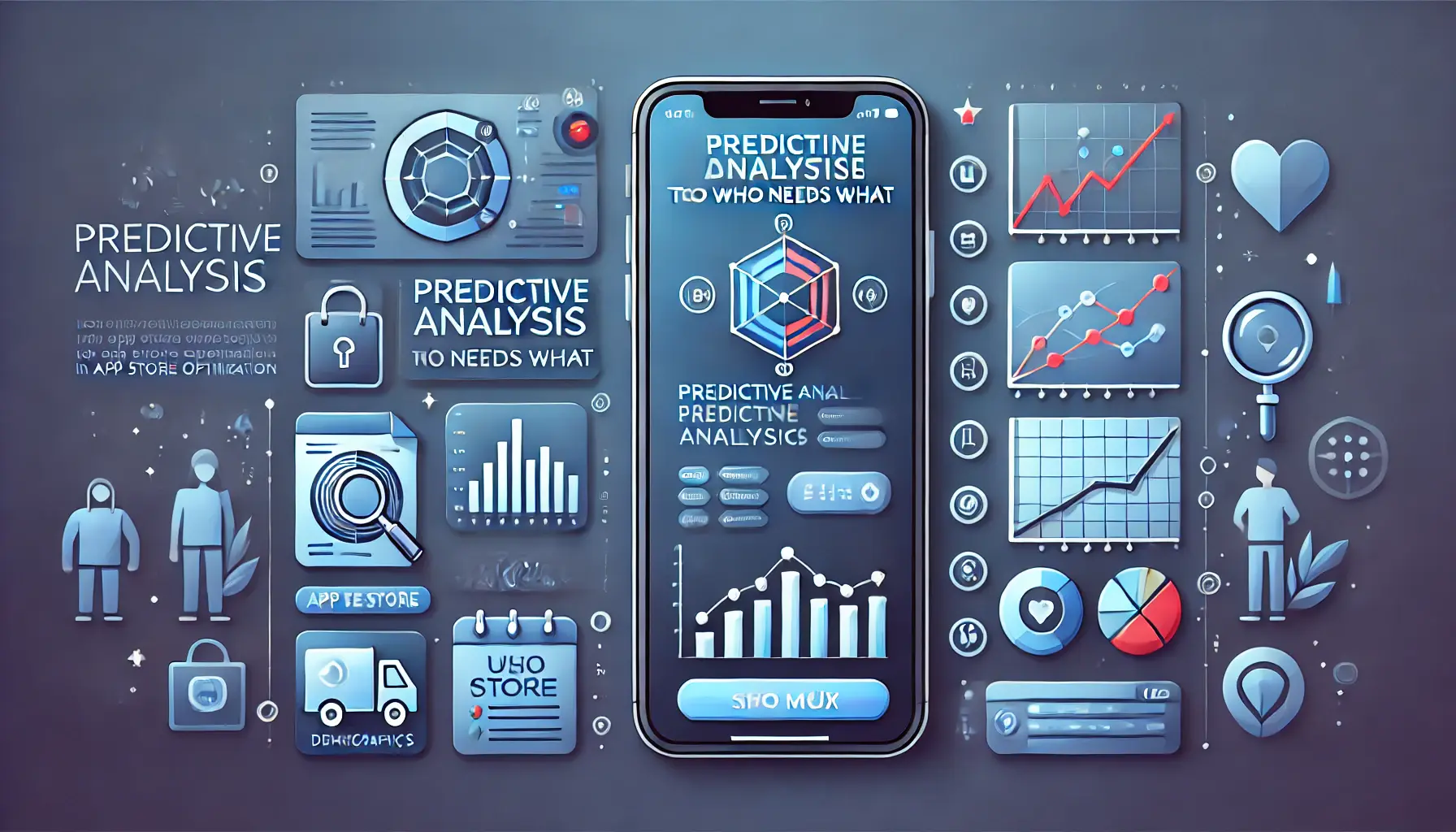
Depiction of how predictive analysis helps determine user needs in App Store Optimization.
Predictive Analysis to Determine Who Needs What
Predictive analytics is growing in importance for ASO.
Predictive models use historical data to forecast trends in user behavior, helping you understand what your audience needs before they even realize it.
This proactive approach allows you to tailor your app’s features, content, and marketing strategies to meet the changing preferences of different demographic segments.
For instance, if predictive analyticsThe use of data, statistical algorithms, and machine learning techniques to identify the likelihood of future outcomes based on historical data. suggest that a specific demographic is likely to be interested in new technology, you can adjust your app to feature content that appeals to that interest, ensuring you stay ahead of the competition.

Depiction of the rise of emerging markets driven by demographic shifts.
Demographics and the Associated Rise of Emerging Markets
The global app economy is shifting focus to emerging markets, with rising smartphone penetration in regions like Asia, Africa, and Latin America.
Understanding the demographics in these regions is essential for ASO success.
These regions often have distinct cultural preferences, economic dynamics, and digital habits compared to traditional markets.
By learning about these unique demographics, you can optimize your ASO strategies and tweak your app’s native features to tap into these emerging opportunities.
If you plan to target specific geographic locations, pushing localized content and pricing models that match the needs of particular regions can significantly boost your app’s popularity in these areas.
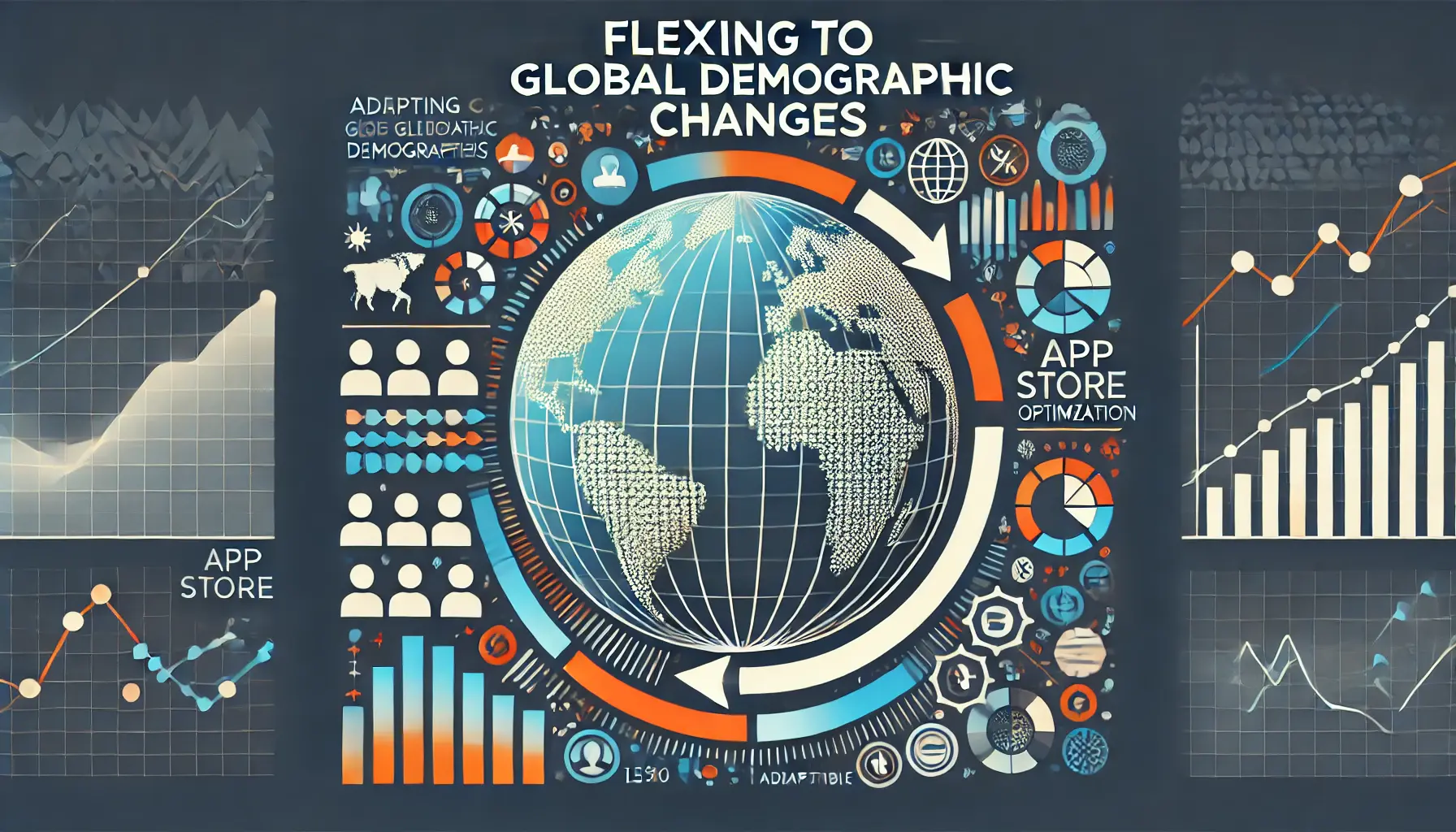
Depiction of the importance of adapting to global demographic shifts in App Store Optimization.
Flexing to Global Demographic Changes
The demographics of app users will continue to change as the global population evolves.
Over the next few years, demographic shifts, including aging populations, urbanizationThe process of making an area more urban through population growth and infrastructure development., and changing consumer behaviors, will continue to impact ASO strategies.
To stay ahead of these changes, it is important to continually monitor and adjust your ASO strategies.
You should revise your app’s features, content, or target audience to adapt to a changing population.
For example, as the global population ages, you might consider incorporating features or content that appeal to older users.
Similarly, with the rapid development of urban environments, apps catering to city life could see increased demand.
Understanding these demographic changes ensures that your app remains relevant and competitive in an ever-changing market.
As demographics continue to evolve, keeping your ASO strategies aligned with these trends will be crucial for maintaining a competitive edge.
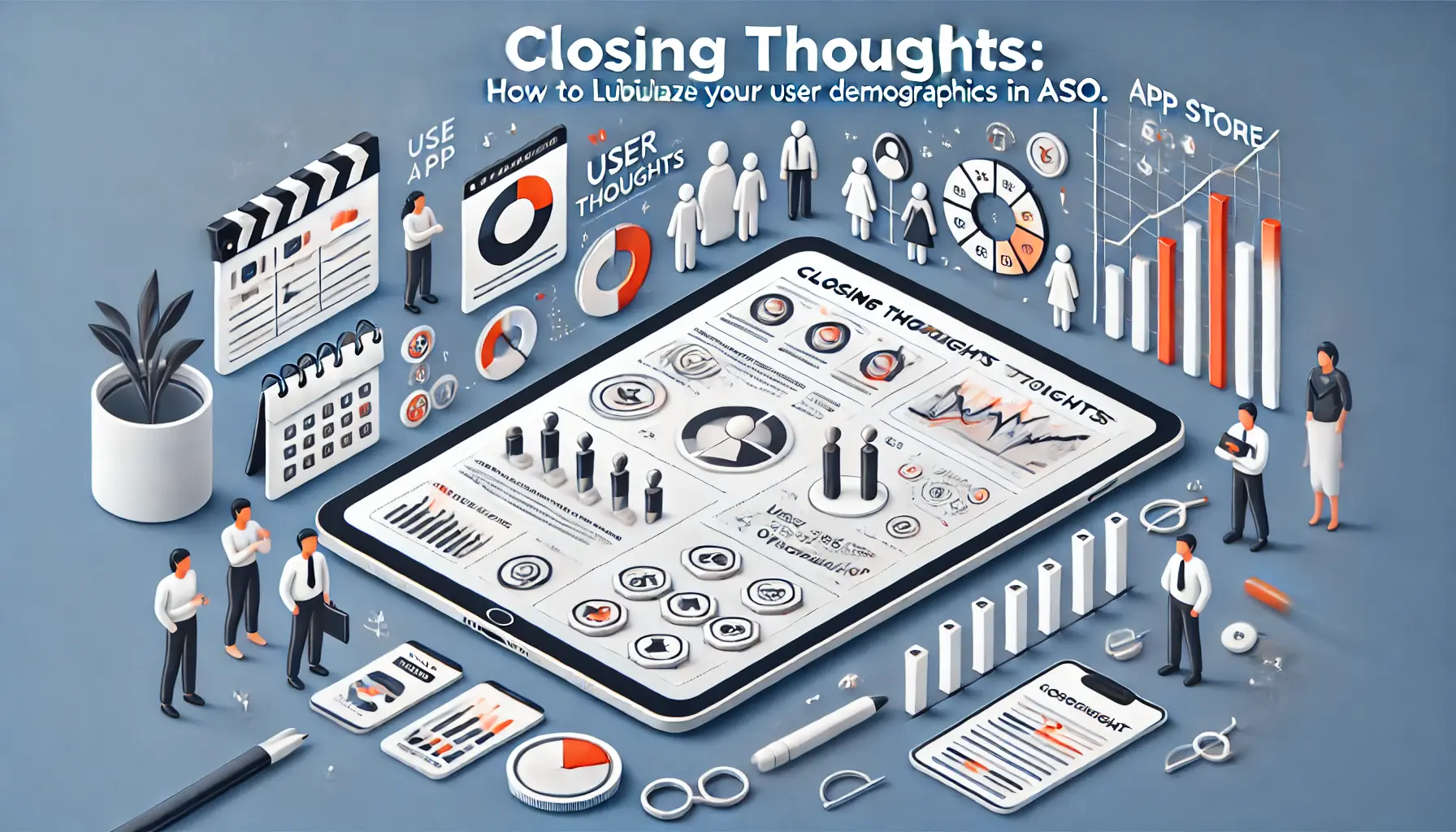
Depiction of the key takeaways on leveraging user demographics for effective App Store Optimization.
Closing Thoughts: How to Utilize Your User Demographics in ASO
As app stores become increasingly crowded with new contenders, it has never been more important to tap into demographic insights in this fiercely competitive environment.
As the different sections of this article explain, demographic insights play a major role in bringing your App Store Optimization (ASO) strategies to life and contributing towards making it easier for users worldwide to find and engage with your app.
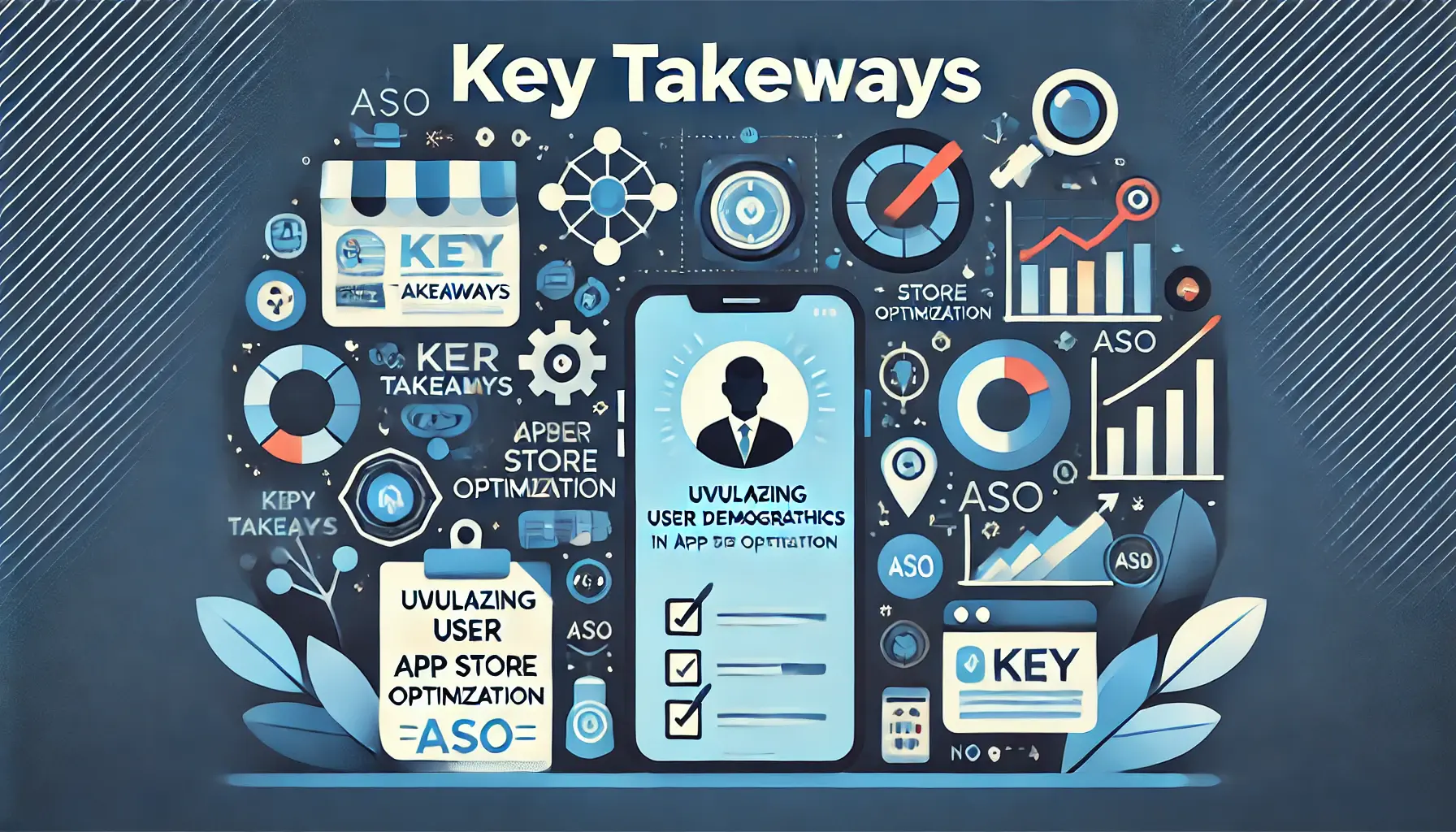
Depiction of the essential conclusions from the discussion on leveraging user demographics in App Store Optimization.
Key Takeaways
- Targeted Campaigns: You can create targeted campaigns that have a better chance of having your app discovered and downloaded when you know user demographics. These campaigns resonate with specific audience segments, increasing the likelihood of success.
- Localizing App Store Listings: Your app store listings—descriptions, icons, screenshots—should be tailored to reflect demographic data that helps attract the prime users who can benefit from your app.
- Keyword Strategies: Demographics significantly impact your ASO keyword strategies. By choosing keywords that align with the behavior and language of your target audience, you can increase your app’s search rankings and visibility.
- Increased User Engagement: Using demographic insights helps you customize the user experience with personalized push notifications and in-app messages, leading to higher engagement and retention.
- Adapting to Upcoming Trends: As established audiences evolve and new ones emerge, trends like AI/ML or growth in newer markets will play a crucial role in ASO. Staying ahead of these trends is key to maintaining a competitive edge.

Depiction of forward-looking strategies and planning for future success in App Store Optimization.
Looking Ahead
Given the ever-changing digital landscape, demographics will only become more critical in ASO as user behaviors continue to evolve.
This means you must continually track demographic shifts and adjust your strategies accordingly, ensuring your app remains competitive in the years to come.
At the end of the day, integrating user demographics into your ASO campaigns is not just about improving visibility—it’s about establishing a deeper connection with your users.
When your app addresses the specific needs and preferences of its users, it becomes more than just another option in the app store—it becomes an essential part of their daily lives.
As you move forward with your ASO strategies, remember that the insights you gain from understanding user demographics are not just data points—they are the keys to unlocking the full potential of your app.

Depiction of the conclusion and wrapping up of key ideas in App Store Optimization.
Final Thoughts
In summary, user demographics are essential for creating a competitive ASO strategy that serves as a solid foundation for success.
By tailoring your app’s features, content, and marketing approach to the unique needs of your target audience, you can drive growth, retention, and long-term success in an increasingly crowded mobile landscape.
Whether you’re new to ASO or looking to refine your existing strategies, remember that demographics are more than just statistics—they are the blueprint for creating an app that truly resonates with its users.
Integrating demographic insights into your ASO campaigns is essential for creating a competitive edge in the crowded app market.

Depiction of addressing frequently asked questions about user demographics in App Store Optimization.
Boost your mobile app's success with our guaranteed App Store Optimization (ASO) service. Leave it to the experts!
User Demographics in ASO: Frequently Asked Questions
This section addresses common questions related to user demographics and App Store Optimization (ASO).
By understanding the role of demographics in ASO, you gain valuable insights into how your app can achieve visibility and engagement on specific levels.
User demographics assist in customizing ASO strategies to match the preferences and needs of your target audience, thereby increasing app visibility, engagement rates, and conversion rates.
Search terms aimed at younger users will differ from those targeting older demographics, which is crucial for relevance when optimizing keywords on all major app stores, including those used by Google Play apps.
Driven by demographic insights, personalized user experiences improve engagement and boost retention, delivering content, notifications, and experiences that are more relevant and satisfying to your audience segments.
Yes, AI and Machine Learning utilize demographic data to analyze patterns, predict user behavior, and optimize your ASO strategy in real-time, ensuring that your app connects with its target audience.












